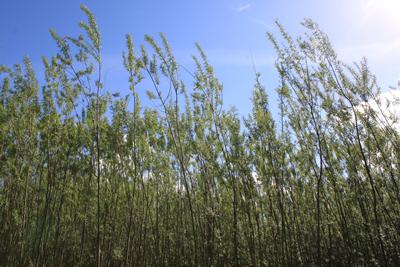
With rising atmospheric CO2 linked to climate change, capturing CO2 for geological storage or conversion into useful products is considered to be a valuable option to achieve a low carbon economy. We are exploring novel technologies that can contribute to the capture, storage and sequestration of carbon dioxide.
A whole-systems perspective on energy futures in a way that integrates energy and environmental considerations
University of Southampton's Professor Gail Taylor and Dr Felix Eigenbrod are part of a consortium which has secured a £439,609 share of the NERC £2 million funding for a 5 year project as part of the UK Energy Research Centre Grand Challenge to explore future UK low-carbon energy pathways and quantify their implications for natural capital and provision of ecosystem services. The project started in June 2015.
The consortium
The project brings together six UK partners: University of East Anglia, University of Aberdeen, University College London, University of Leeds and Plymouth Marine Laboratory. Together with researchers at Southampton the consortium will work on aspects of the theme ranging from micro-economic modelling through to landscape scale changes likely to be occurring as the UK moves towards a low carbon future.
Renewable energy and green house gas sequestration - the context
To meet the 2020 renewable energy target the UK will need biomass. DECC aspires to an additional 20-38TWh of biomass electricity by 2020 which will require around 12-23 million dry tonnes of biomass. Most of this would be imported as pellets from Canada and the USA and burnt in converted coal fired power plants. Other imported feedstocks for liquid fuels might include Brazilian ethanol from sugar cane and oils from palm oil in Southeast Asia. The Netherlands, Belgium, Denmark, and Sweden all expect to use more, and estimates of future EU demand for wood pellets alone, for example, range from 23-80 million tonnes.
However, is the use of biomass for energy environmentally sustainable? Any type of managed land use can incur a carbon 'debt' - a net loss of carbon or other greenhouse gases to the atmosphere that contributes to global warming. Other greenhouse gases include methane and the oxides of nitrogen. But quantifying the net impact of a bioenergy crop relative to what it might replace (sometimes called the counterfactual), is difficult. This has led to many claims and counter-claims from commercial interests, environmental groups and academics, on the real greenhouse gas impact of land use change to bioenergy systems, where there still remains much disagreement and controversy.
The project described here is aimed at addressing this controversial issue - quantifying the real GHG balance of different land use transitions to bioenergy crops, for both UK and imported bioenergy feedstocks. We will deploy sophisticated state-of-the-art instrumentation that is able to measure GHGs very rapidly, to gain a better insight into the dynamic range of GHG emissions that can occur in such systems, including when fields are ploughed and planted and when fertilisers are added. Following data collection, we will extend our analysis by modelling a wide geographical range across the UK and for biomass feedstock sourced from other areas of the world. The models we use should work if we can utilise available datasets, globally, for weather, soils and yield data of the range of crops of interest.